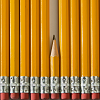There are 38 NRICH Mathematical resources connected to Quadratic equations, you may find related items under Algebraic expressions, equations and formulae.
Broad Topics > Algebraic expressions, equations and formulae > Quadratic equationsSurprising numerical patterns can be explained using algebra and diagrams...



What is the same and what is different about these circle questions? What connections can you make?



How good are you at finding the formula for a number pattern ?



Find all real solutions of the equation (x^2-7x+11)^(x^2-11x+30) = 1.



This is an interactivity in which you have to sort the steps in the completion of the square into the correct order to prove the formula for the solutions of quadratic equations.



In 15 years' time my age will be the square of my age 15 years ago. Can you work out my age, and when I had other special birthdays?



Find all the triples of numbers a, b, c such that each one of them plus the product of the other two is always 2.



Is the mean of the squares of two numbers greater than, or less than, the square of their means?



Rectangle PQRS has X and Y on the edges. Triangles PQY, YRX and XSP have equal areas. Prove X and Y divide the sides of PQRS in the golden ratio.




The area of the small square is $\frac13$ of the area of the large square. What is $\frac xy$?



What do you get when you raise a quadratic to the power of a quadratic?



How many eggs should a bird lay to maximise the number of chicks that will hatch? An introduction to optimisation.



Exploit the symmetry and turn this quartic into a quadratic.



Can you solve this problem involving powers and quadratics?



Can you find a quadratic equation which passes close to these points?



Can you find the maximum value of the curve defined by this expression?



Find the equation from which to calculate the resistance of an infinite network of resistances.



Make and prove a conjecture about the value of the product of the Fibonacci numbers $F_{n+1}F_{n-1}$.



A voyage of discovery through a sequence of challenges exploring properties of the Golden Ratio and Fibonacci numbers.
Find a connection between the shape of a special ellipse and an infinite string of nested square roots.



Draw a square and an arc of a circle and construct the Golden rectangle. Find the value of the Golden Ratio.



This polar equation is a quadratic. Plot the graph given by each factor to draw the flower.



When is a Fibonacci sequence also a geometric sequence? When the ratio of successive terms is the golden ratio!



Find the sides of an equilateral triangle ABC where a trapezium BCPQ is drawn with BP=CQ=2 , PQ=1 and AP+AQ=sqrt7 . Note: there are 2 possible interpretations.



Draw any triangle PQR. Find points A, B and C, one on each side of the triangle, such that the area of triangle ABC is a given fraction of the area of triangle PQR.



Given a regular pentagon, can you find the distance between two non-adjacent vertices?



A bag contains red and blue balls. You are told the probabilities of drawing certain combinations of balls. Find how many red and how many blue balls there are in the bag.



Solve an equation involving the Golden Ratio phi where the unknown occurs as a power of phi.



In this article we show that every whole number can be written as a continued fraction of the form k/(1+k/(1+k/...)).
The diagram shows a regular pentagon with sides of unit length. Find all the angles in the diagram. Prove that the quadrilateral shown in red is a rhombus.



Triangle ABC is an equilateral triangle with three parallel lines going through the vertices. Calculate the length of the sides of the triangle if the perpendicular distances between the parallel lines are 1 unit and 2 units.



Sketch the graphs for this implicitly defined family of functions.



Show that x = 1 is a solution of the equation x^(3/2) - 8x^(-3/2) = 7 and find all other solutions.



Solve quadratic equations and use continued fractions to find rational approximations to irrational numbers.



Two perpendicular lines are tangential to two identical circles that touch. What is the largest circle that can be placed in between the two lines and the two circles and how would you construct it?



Two cubes, each with integral side lengths, have a combined volume equal to the total of the lengths of their edges. How big are the cubes? [If you find a result by 'trial and error' you'll need to prove you have found all possible solutions.]


